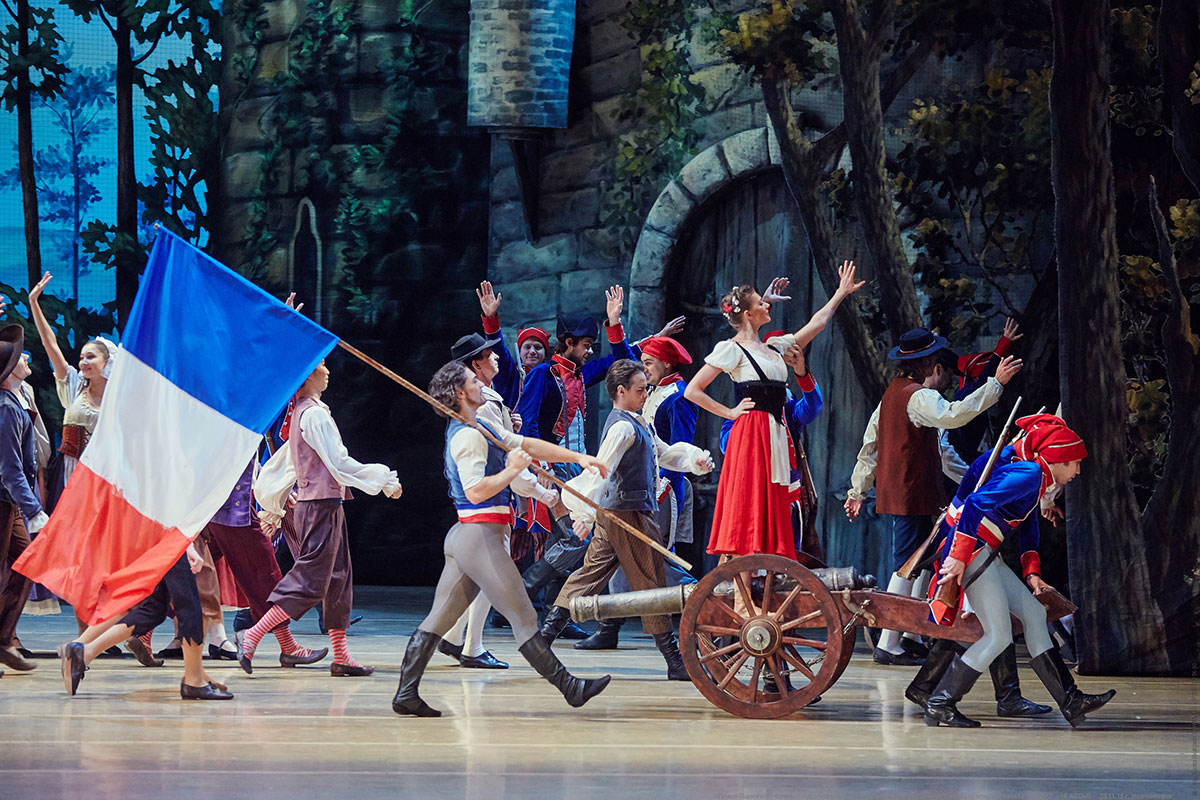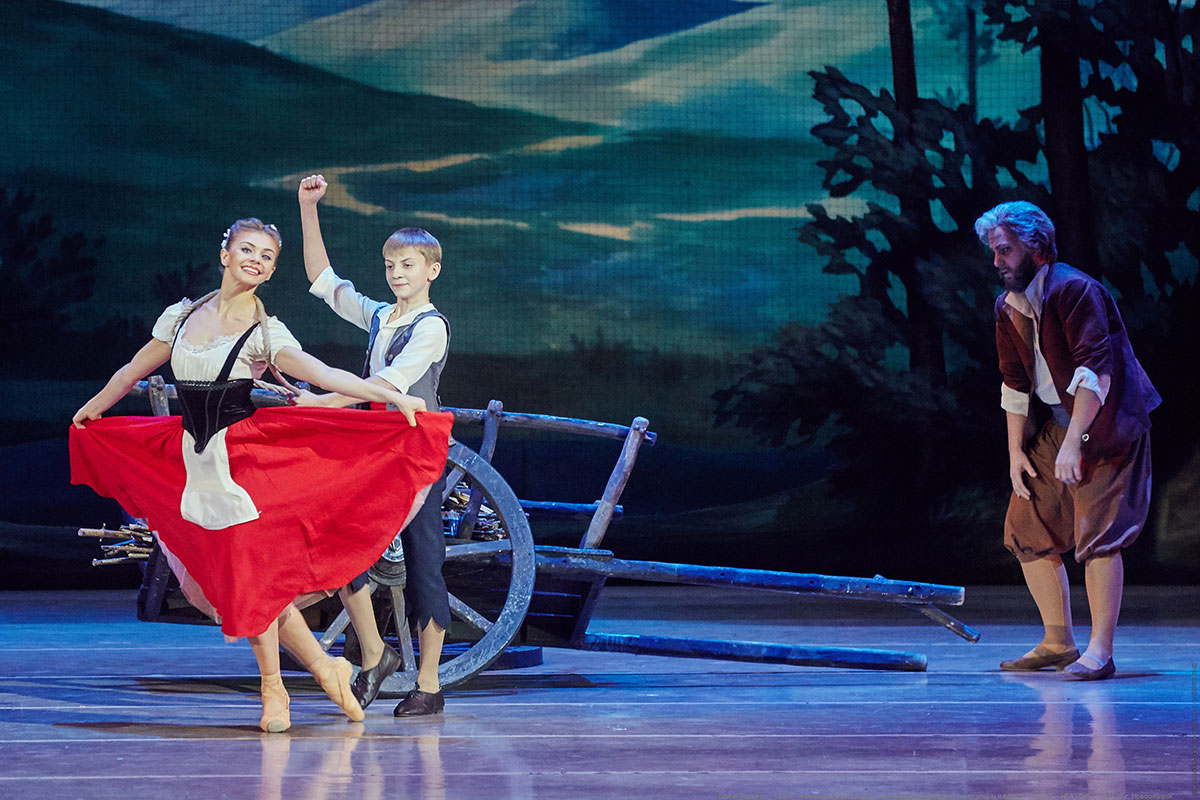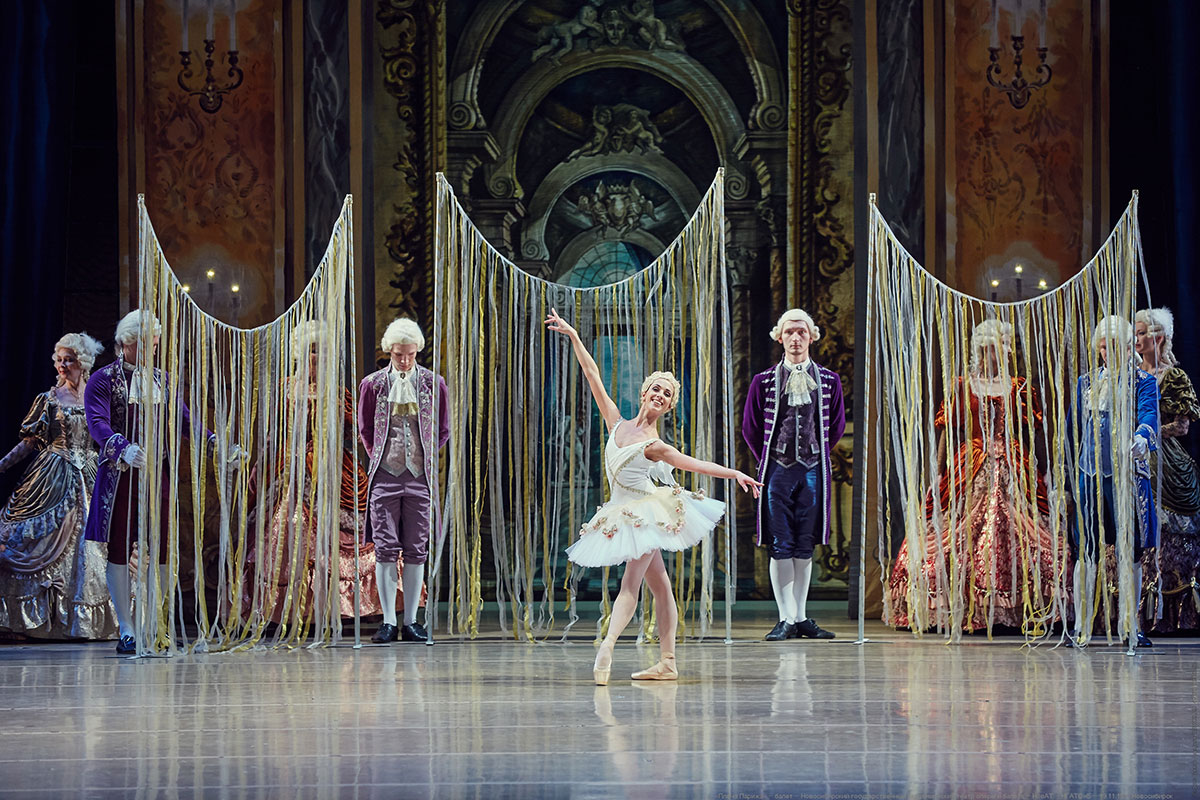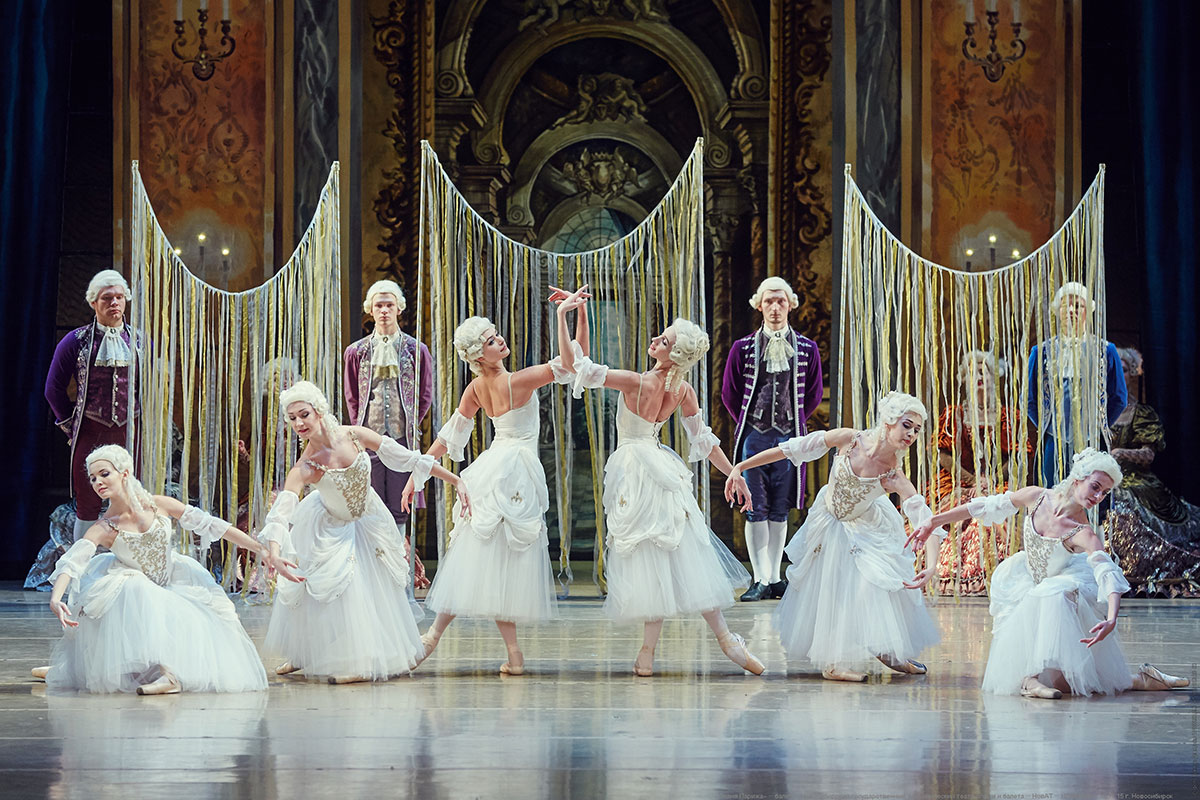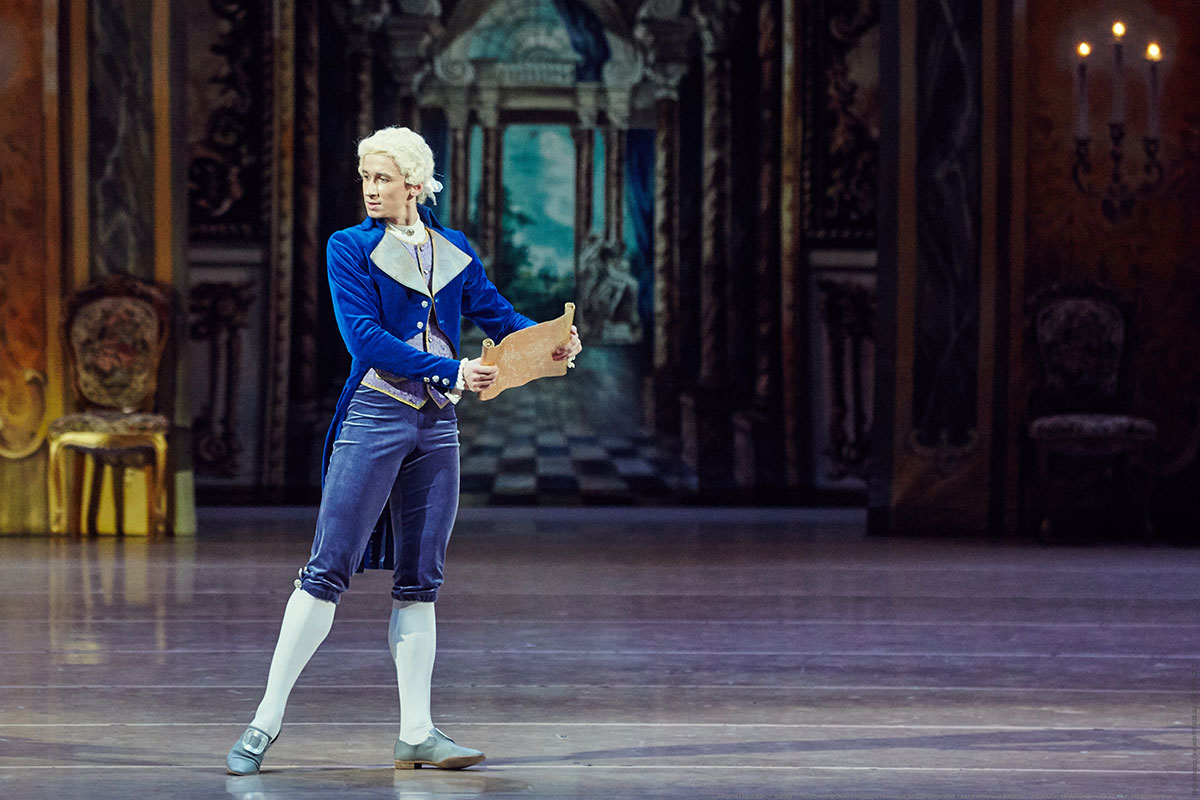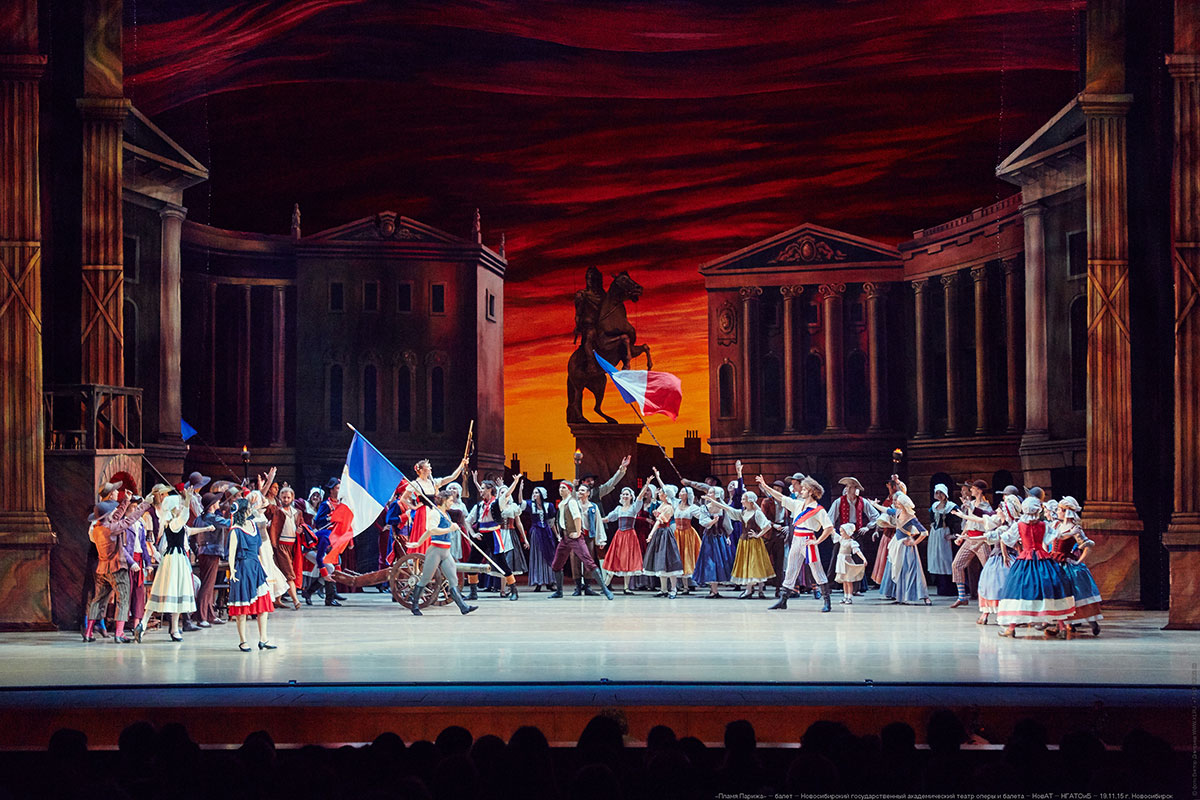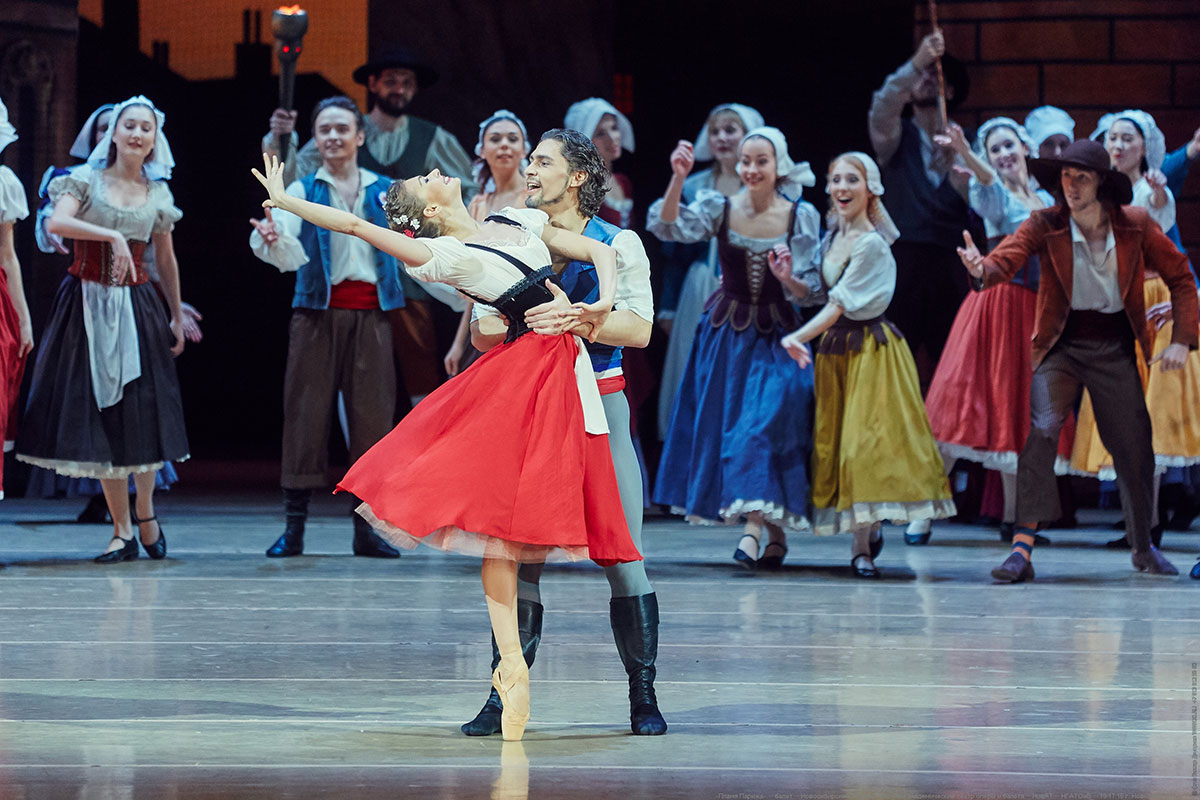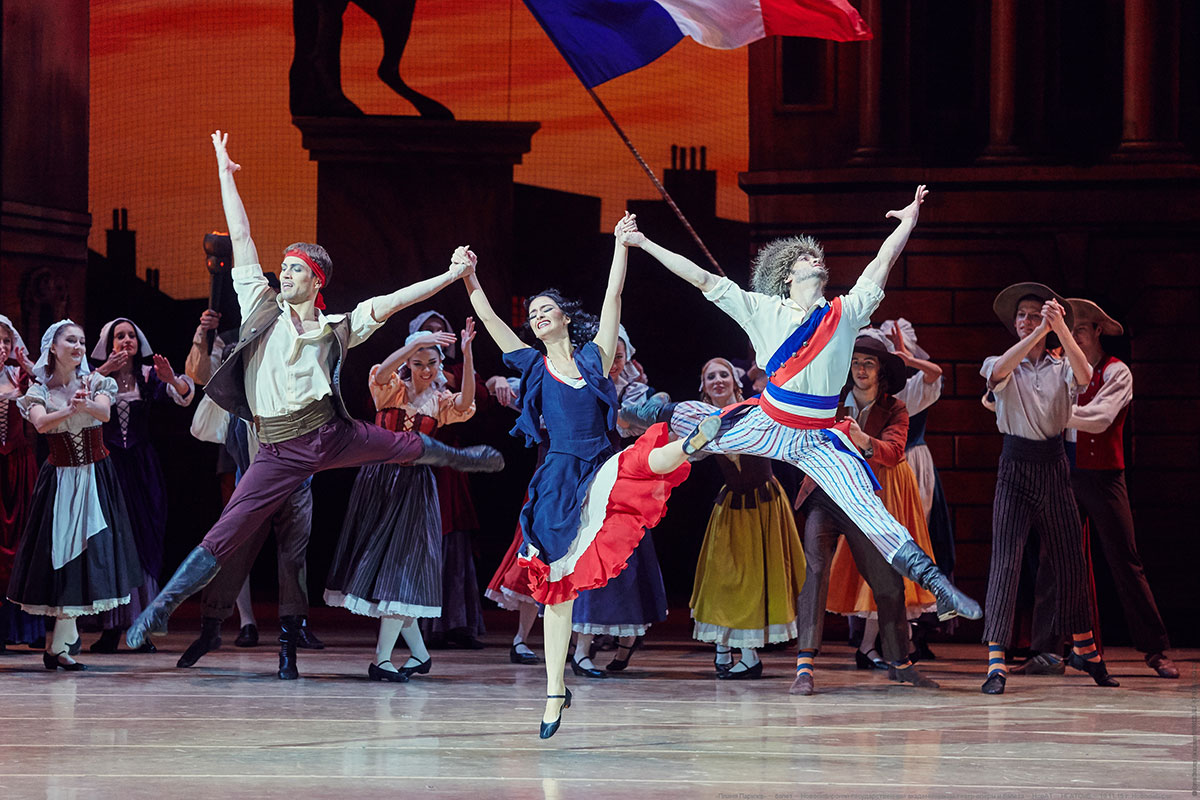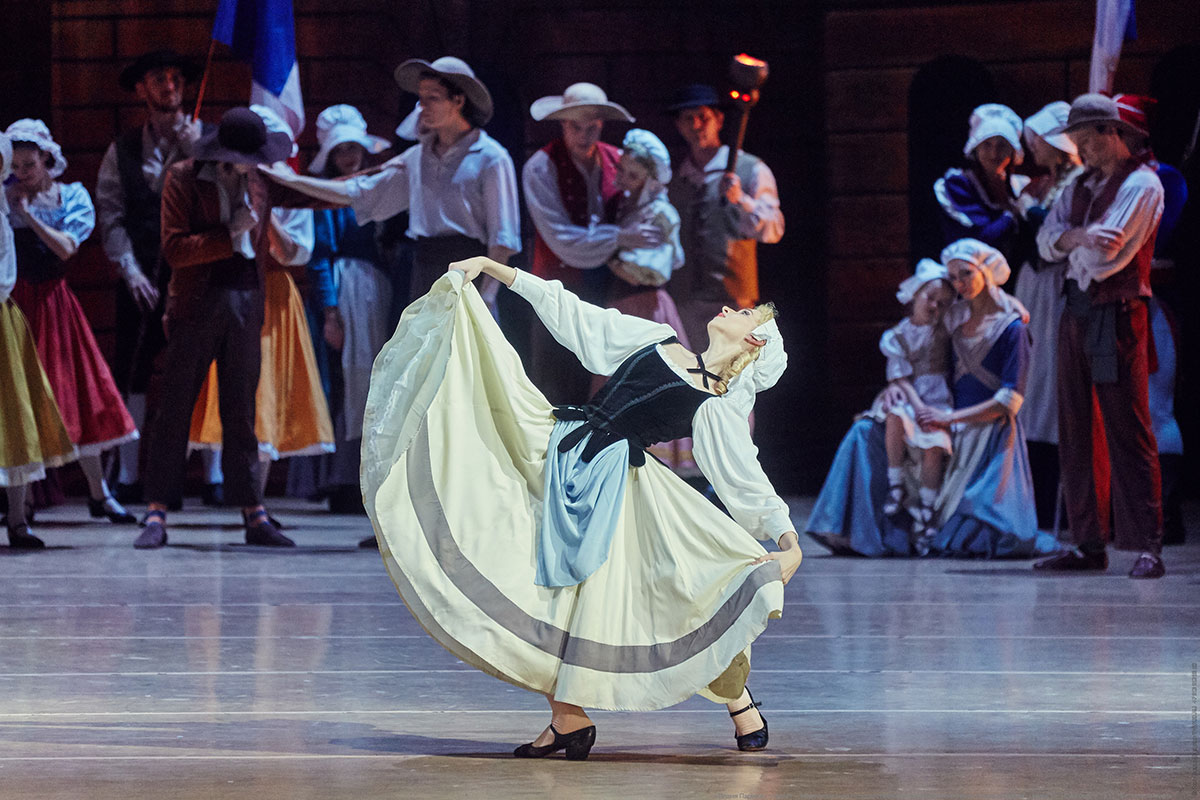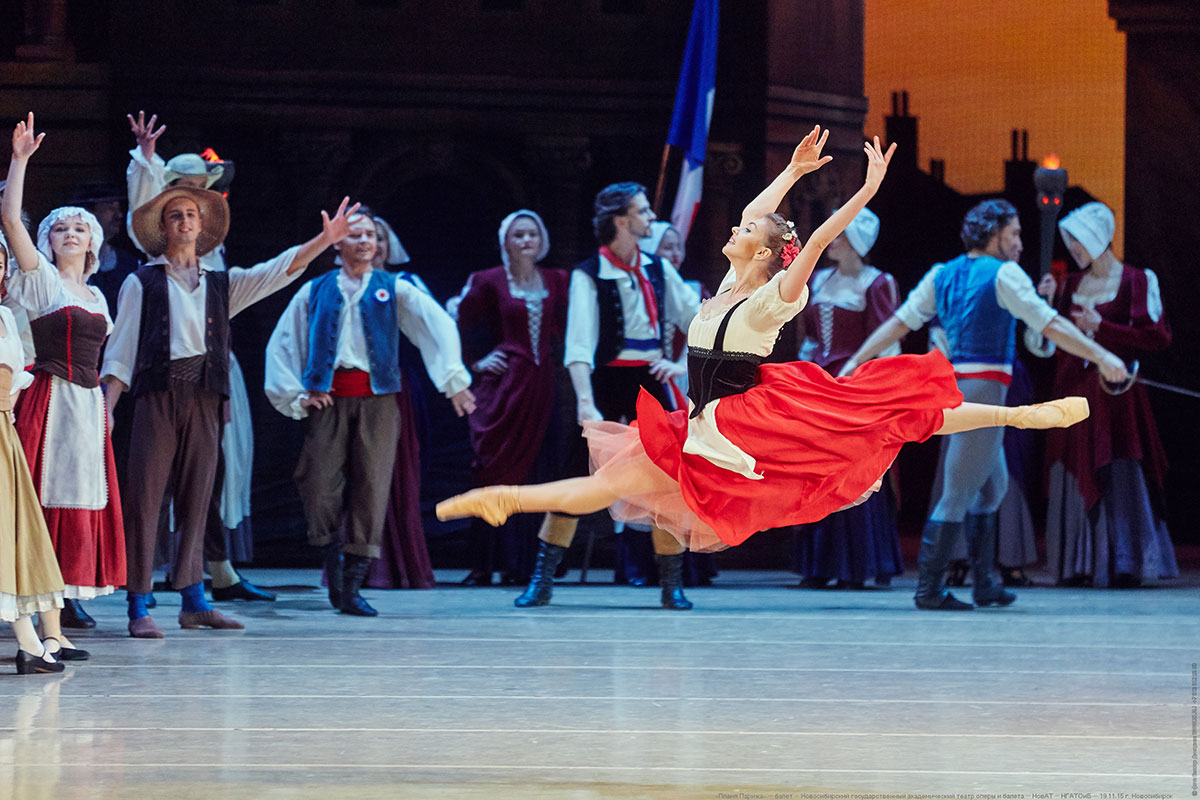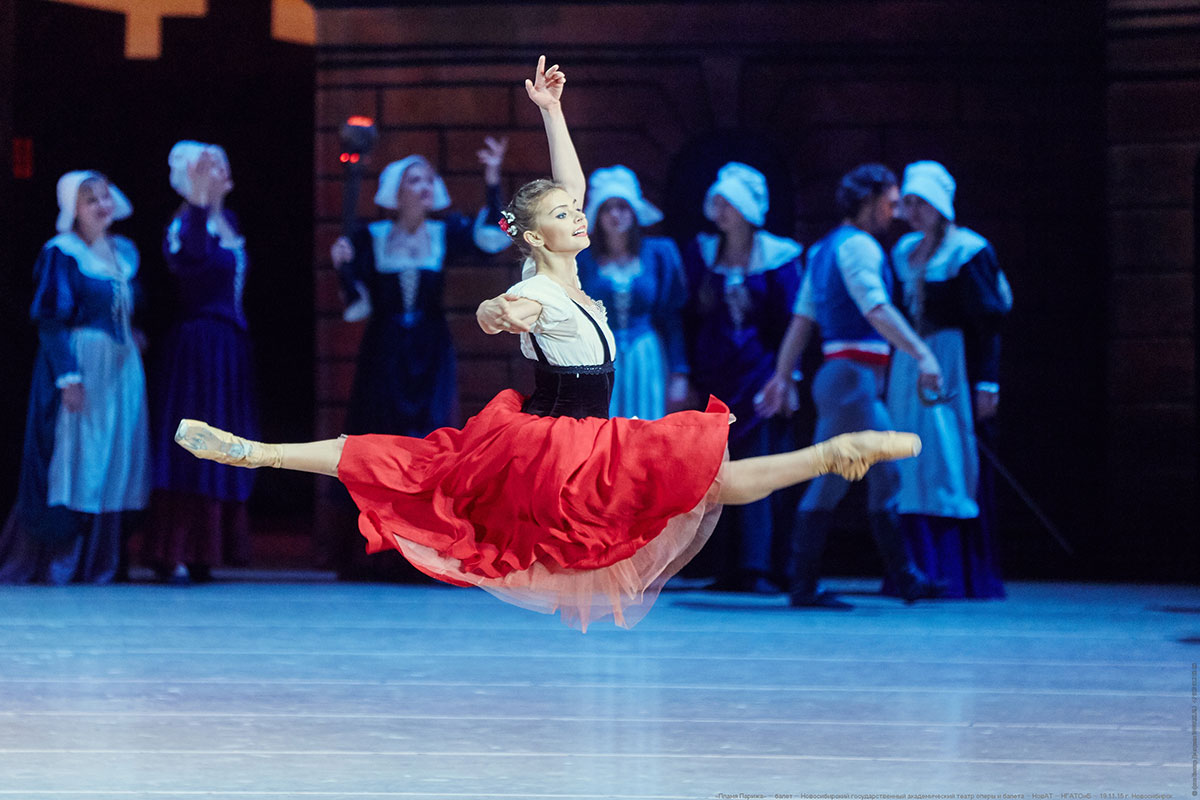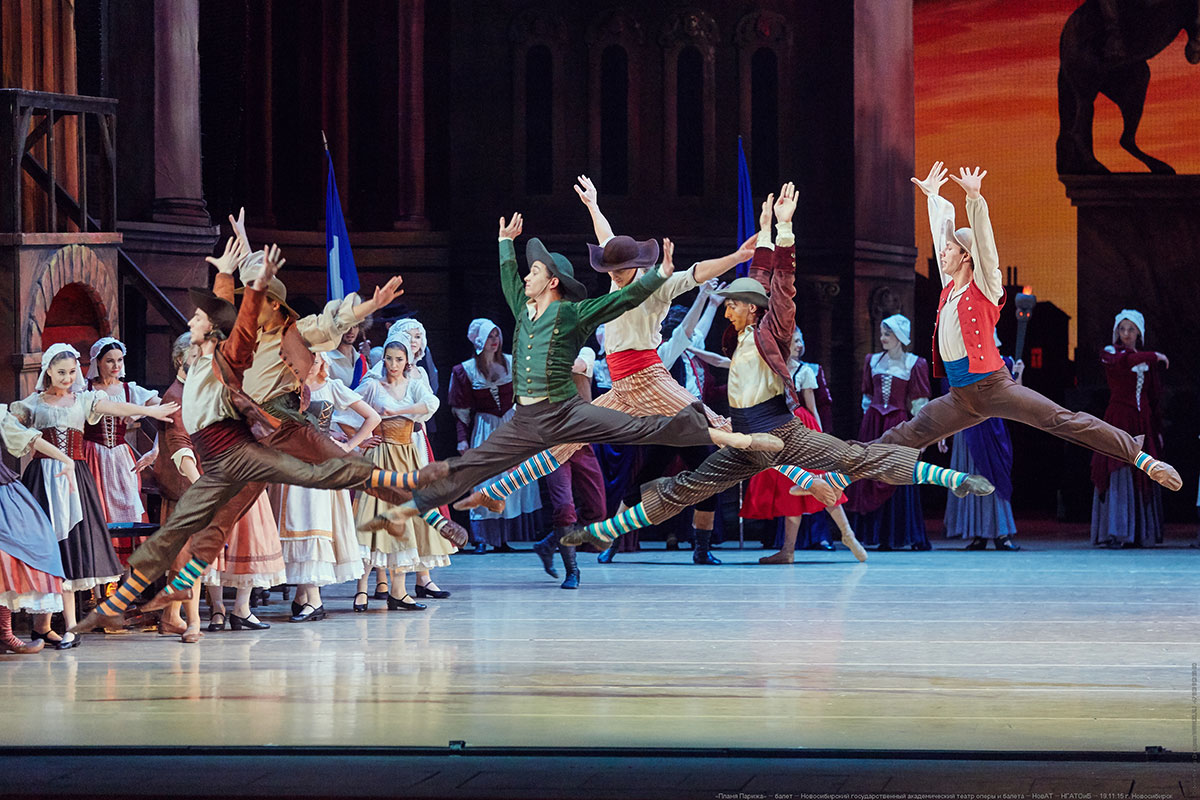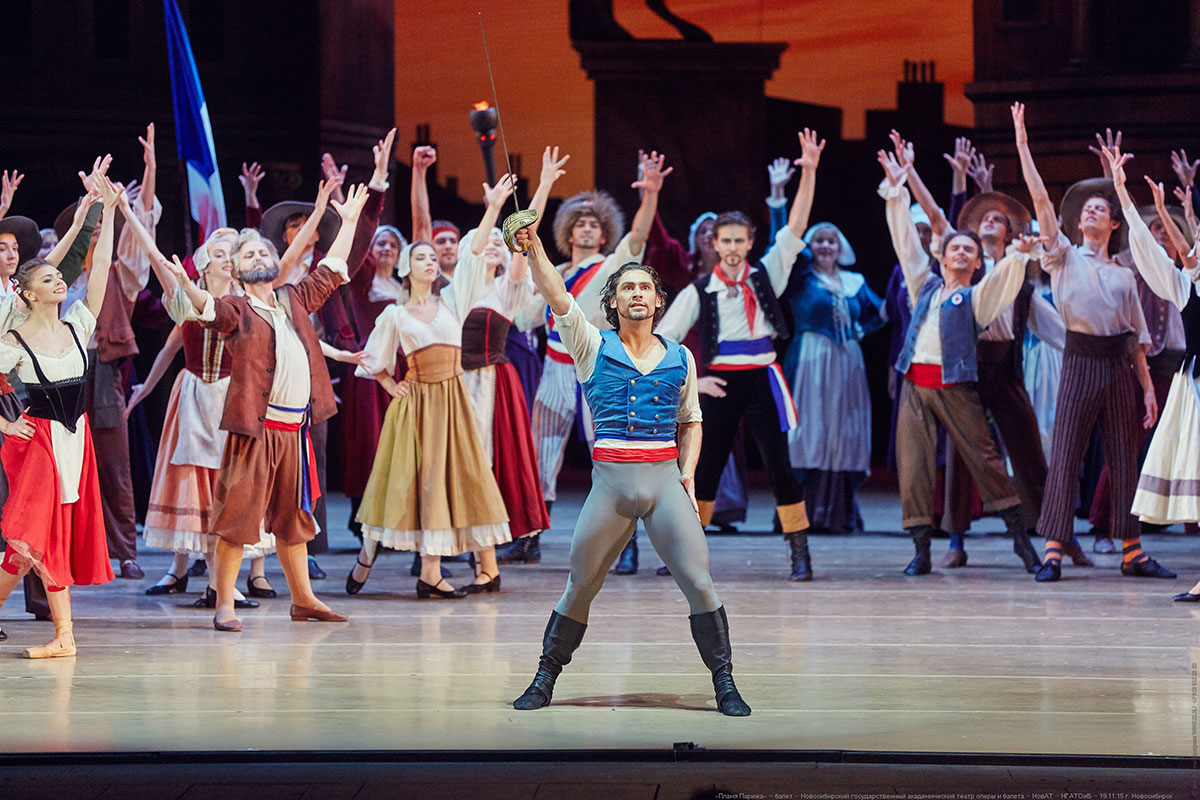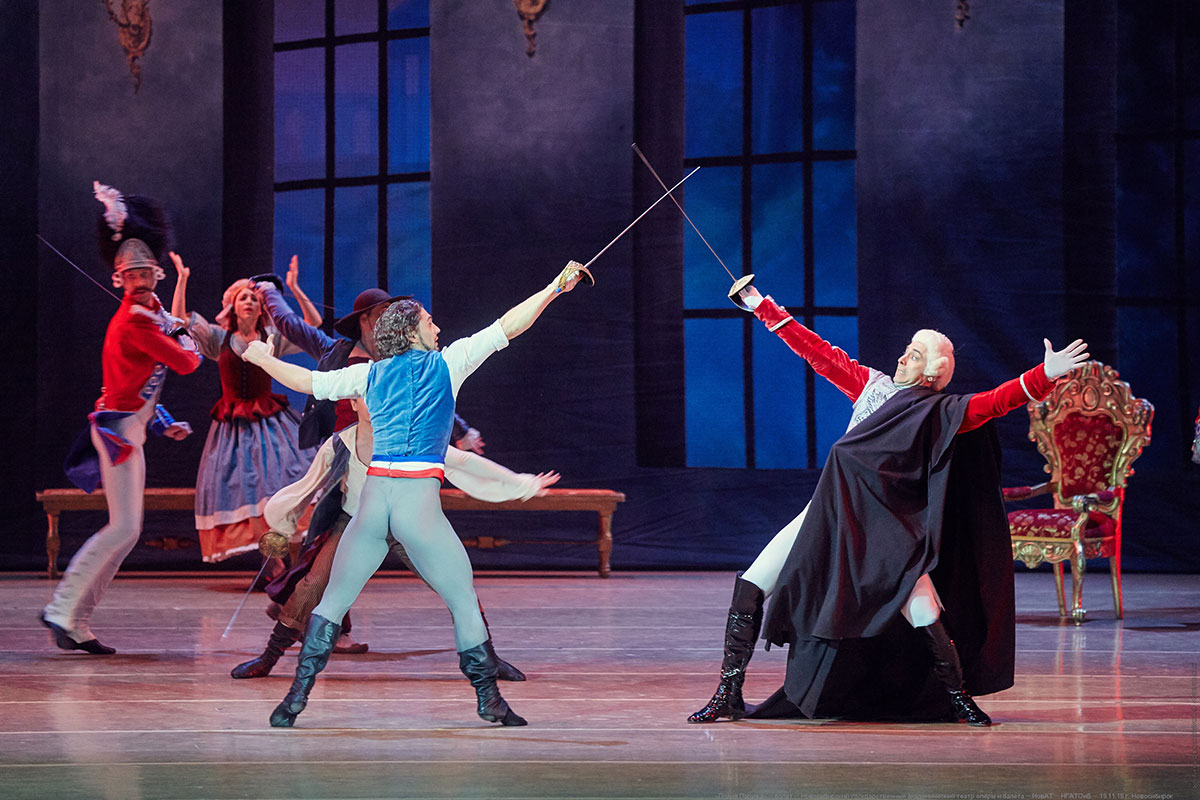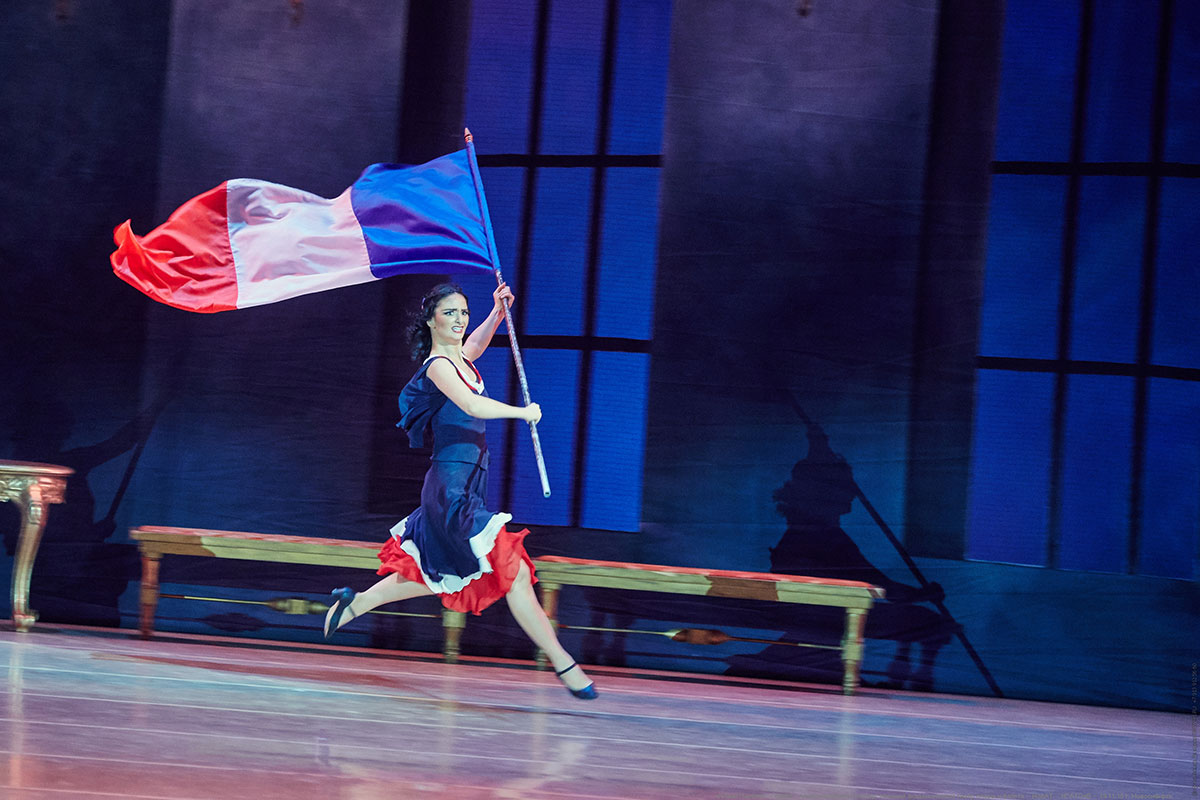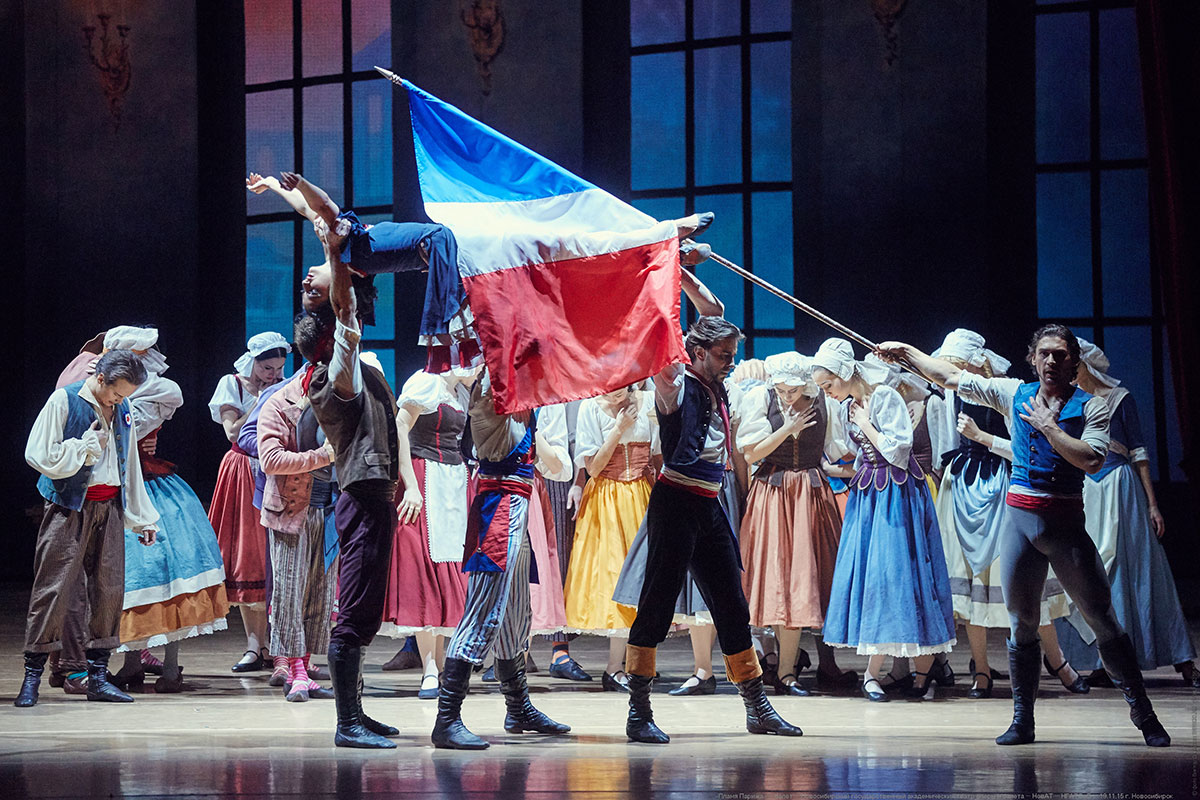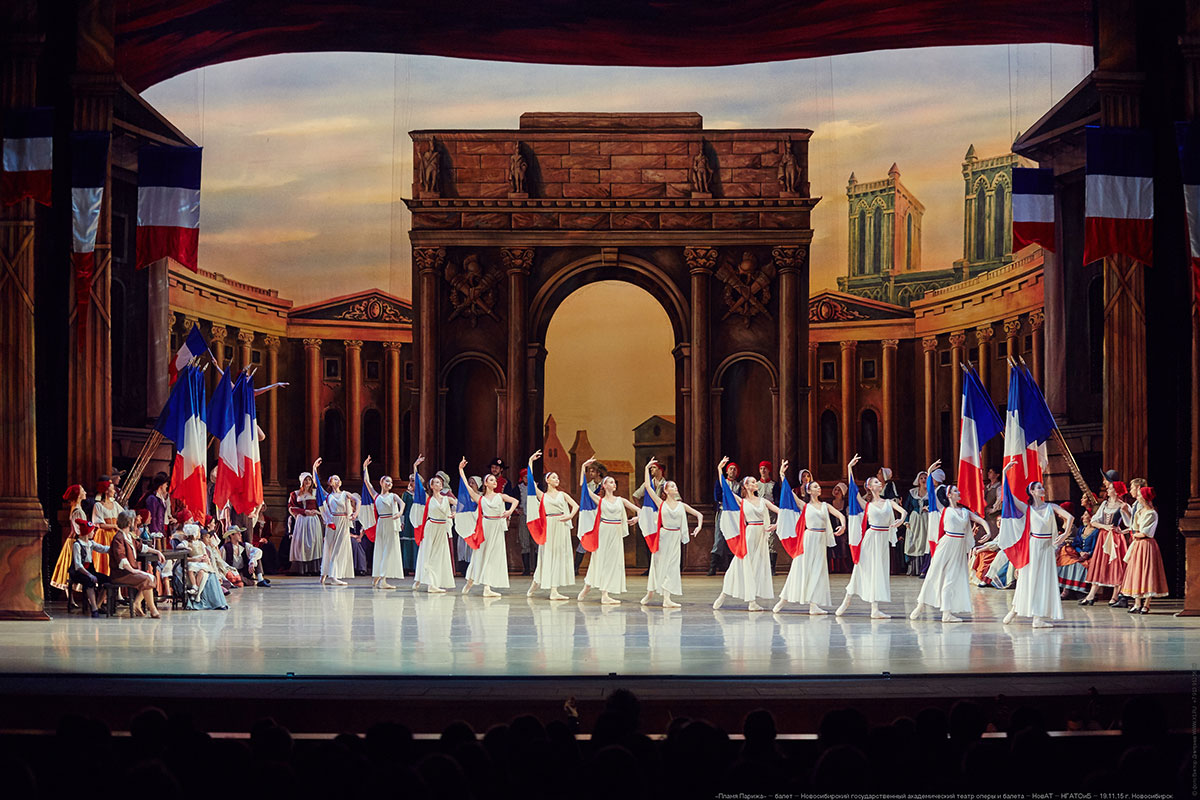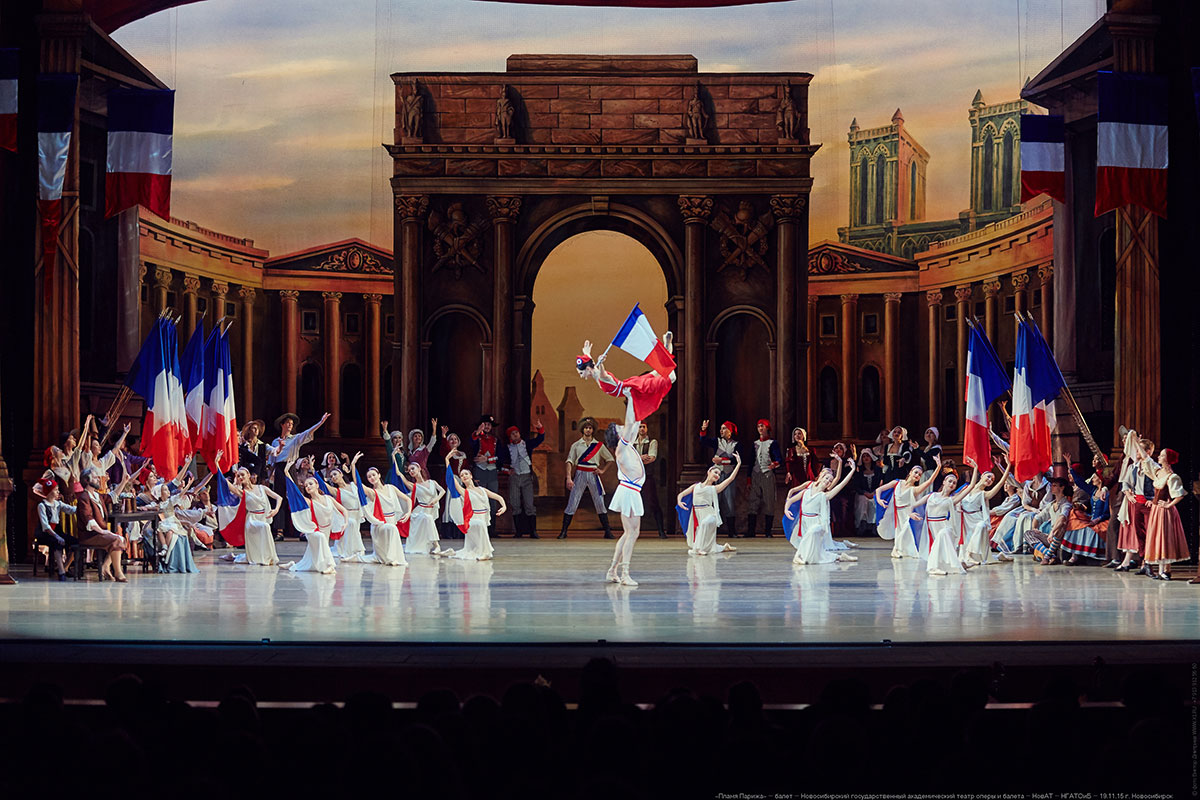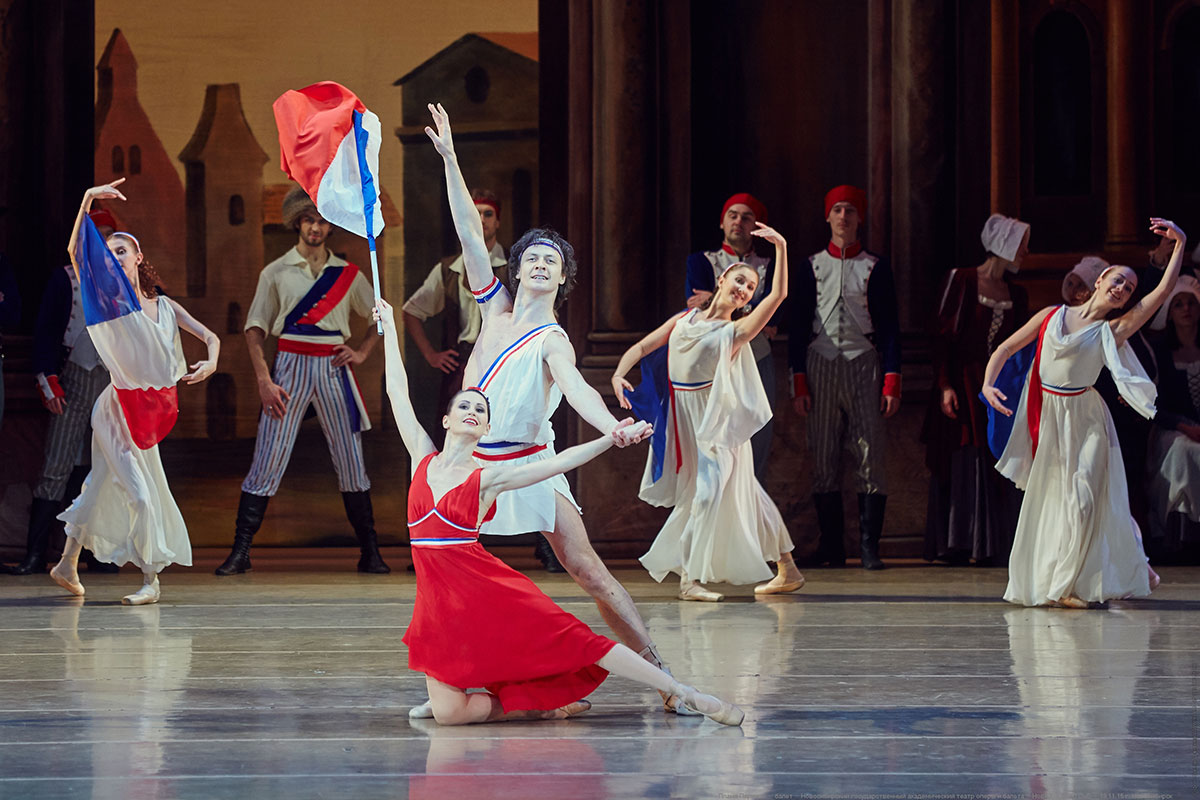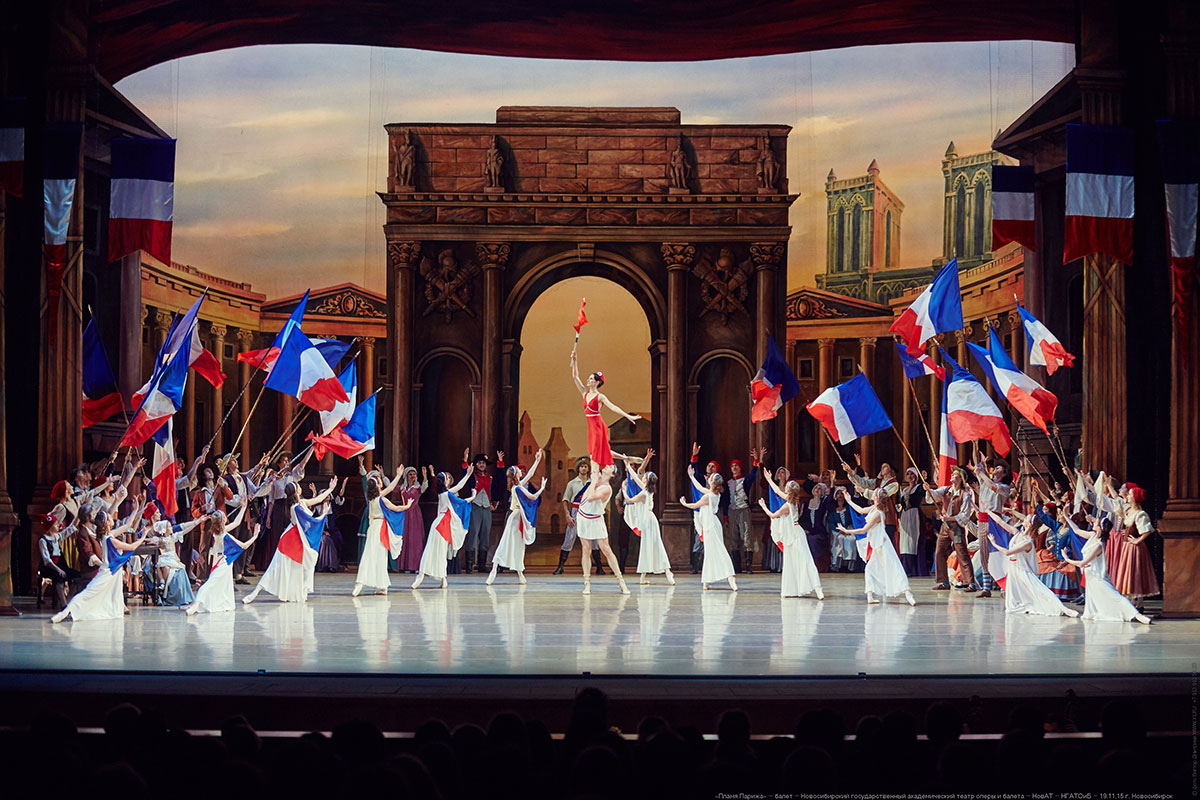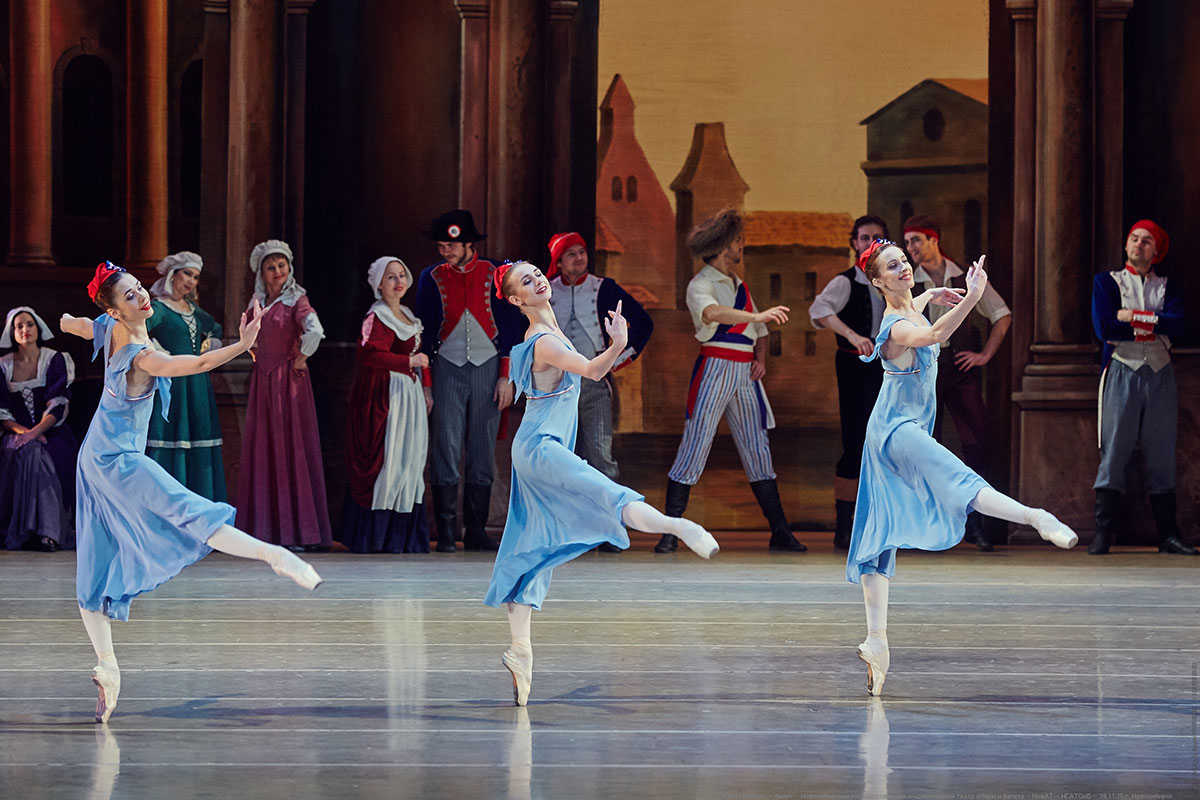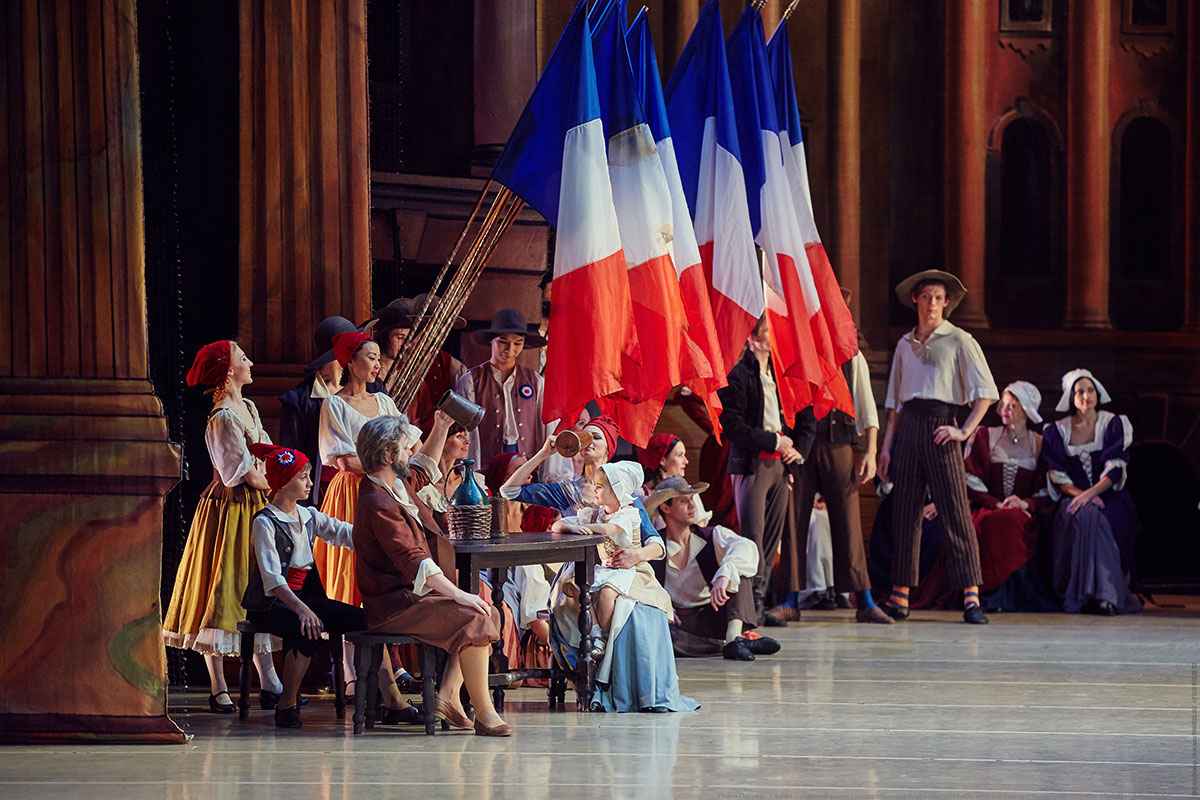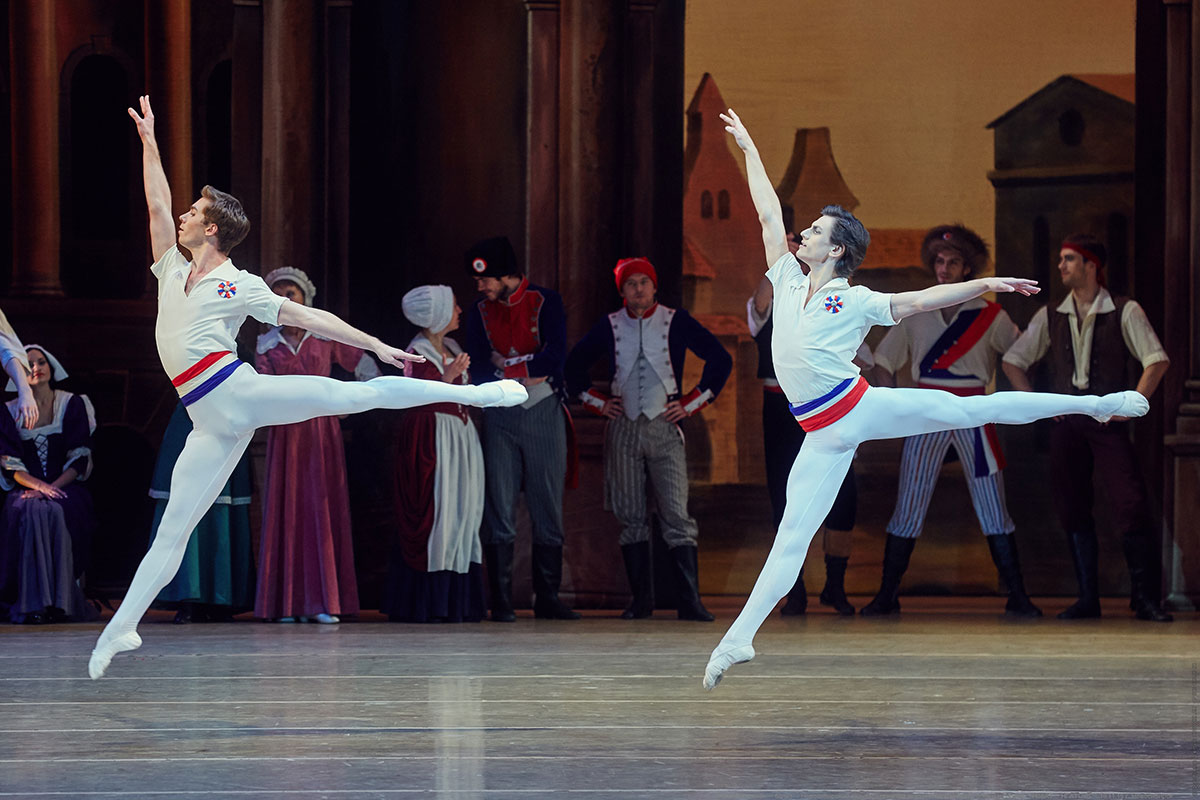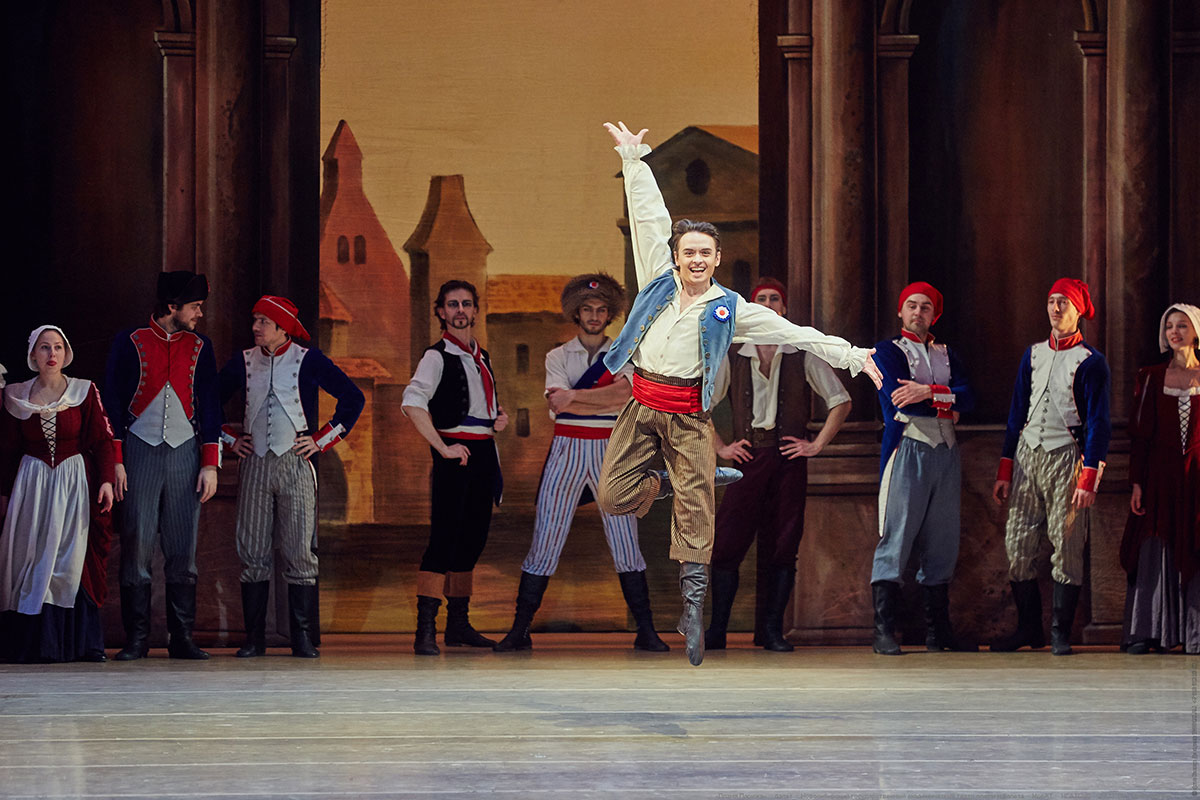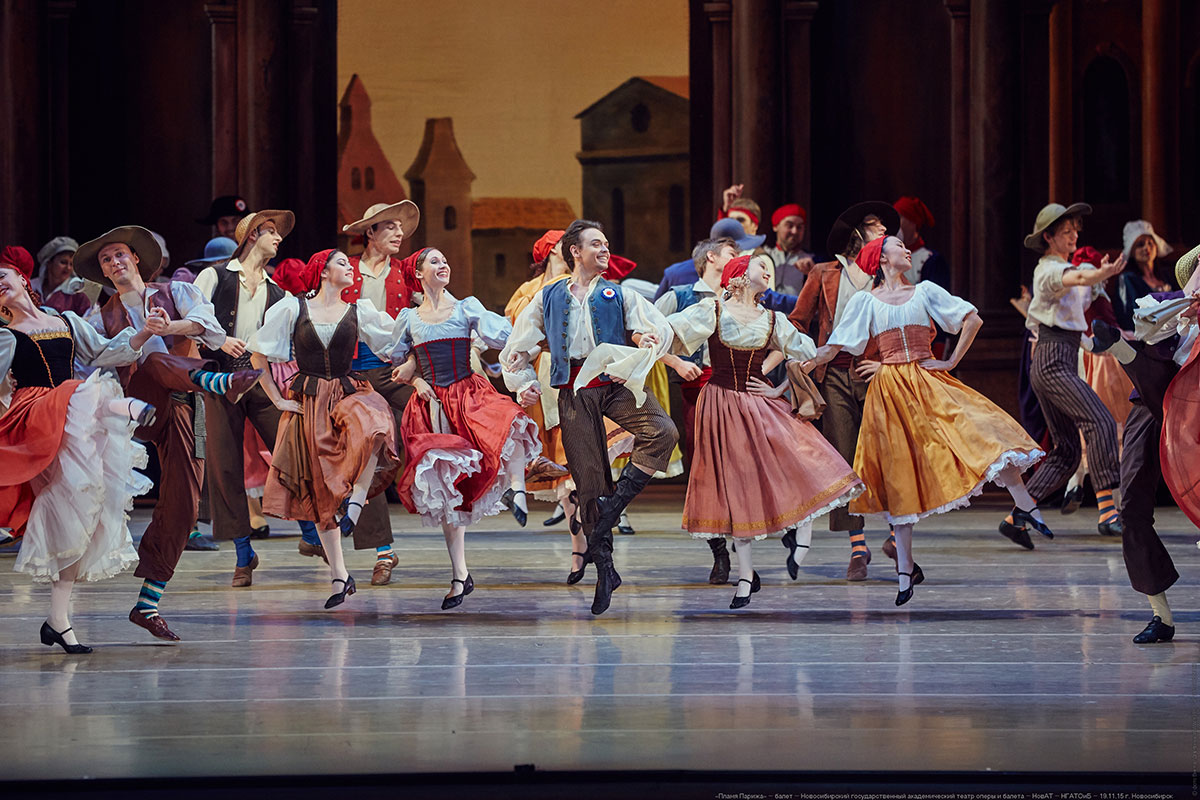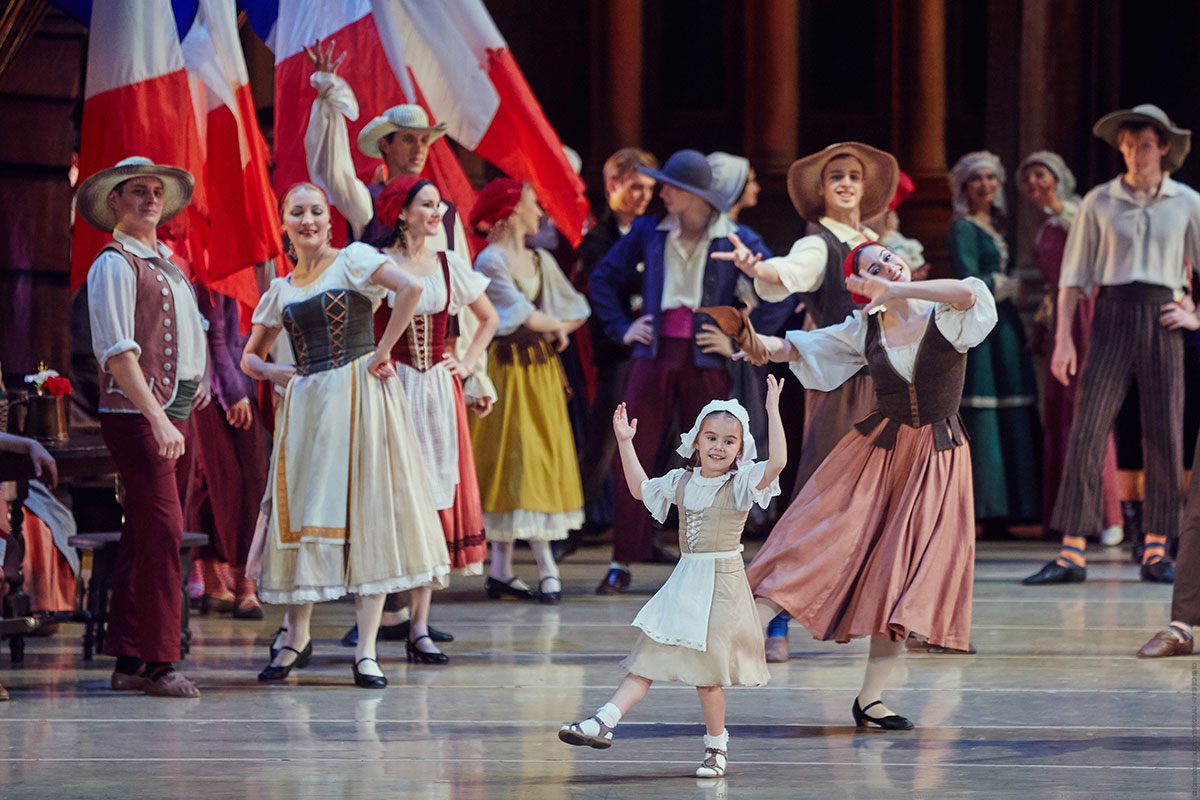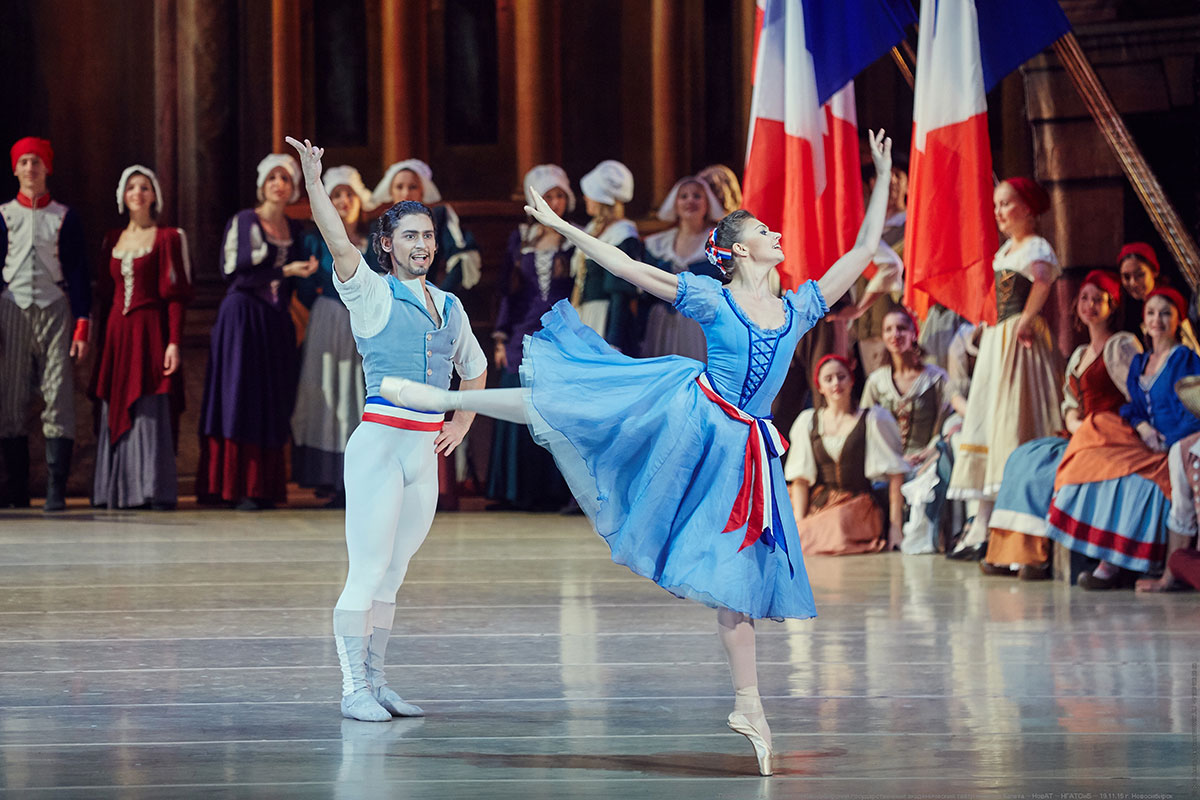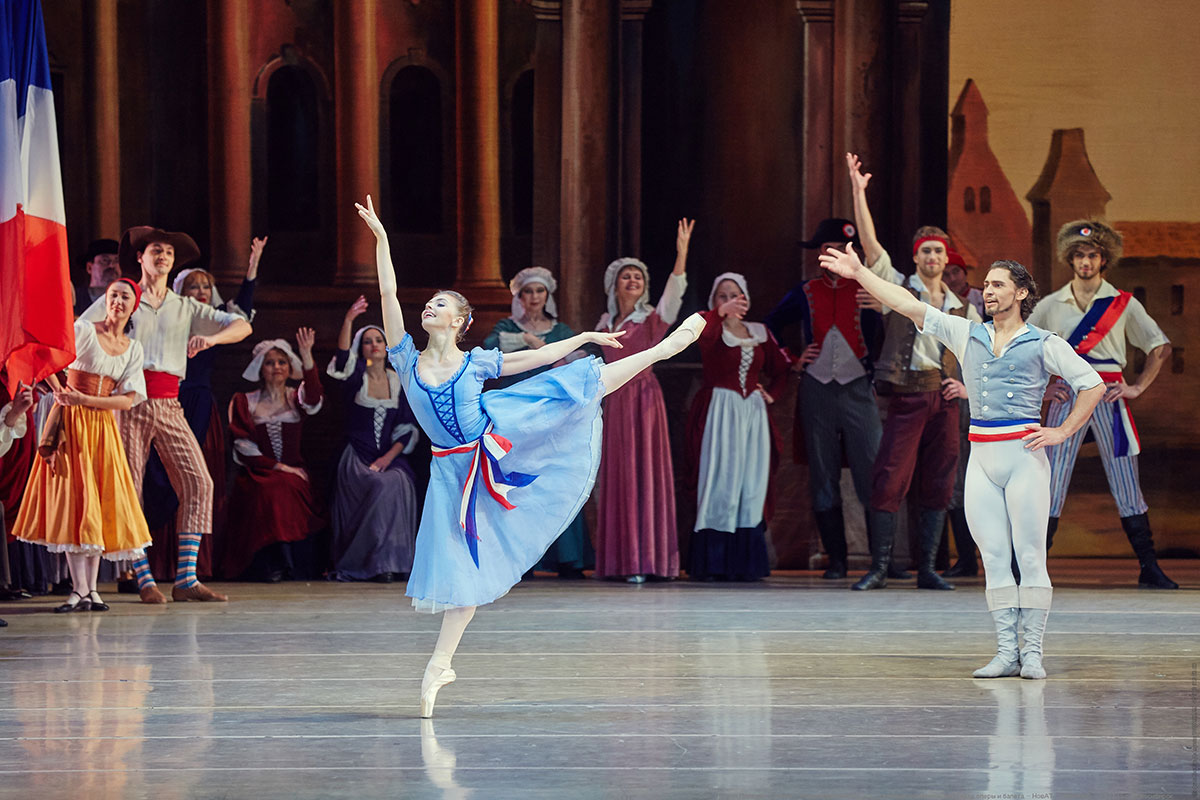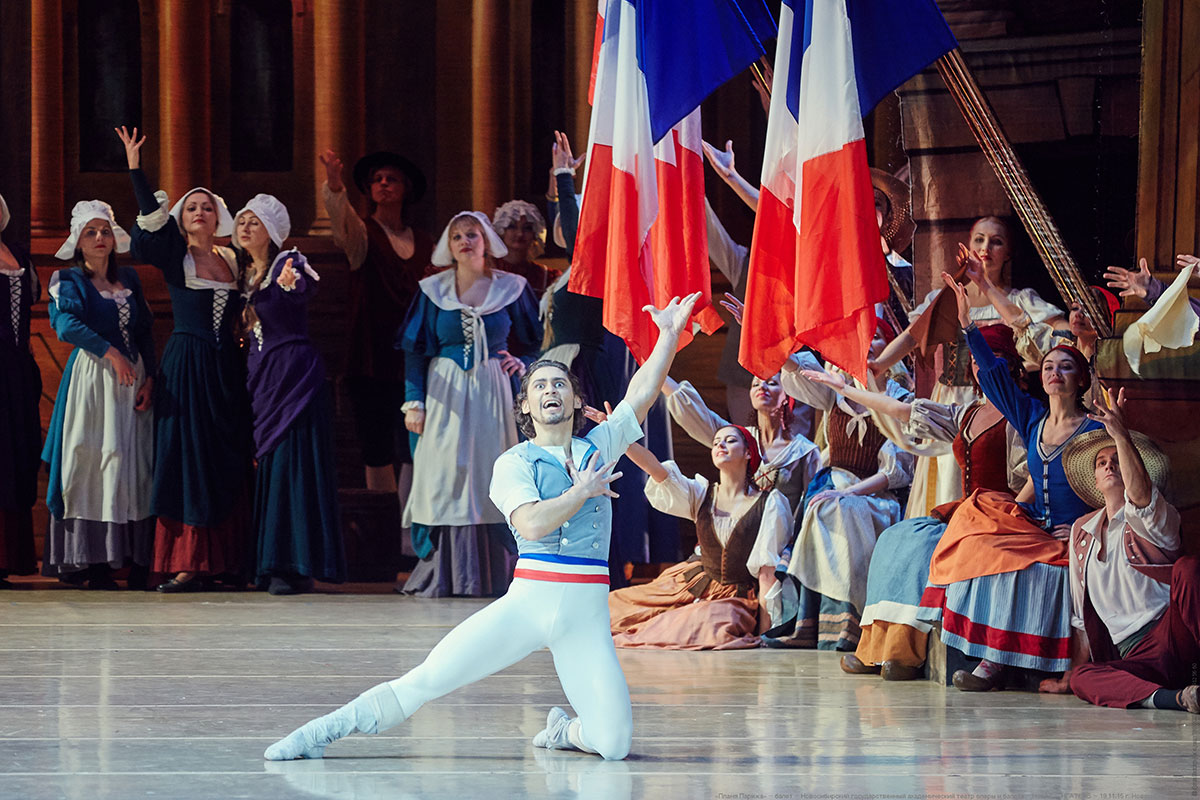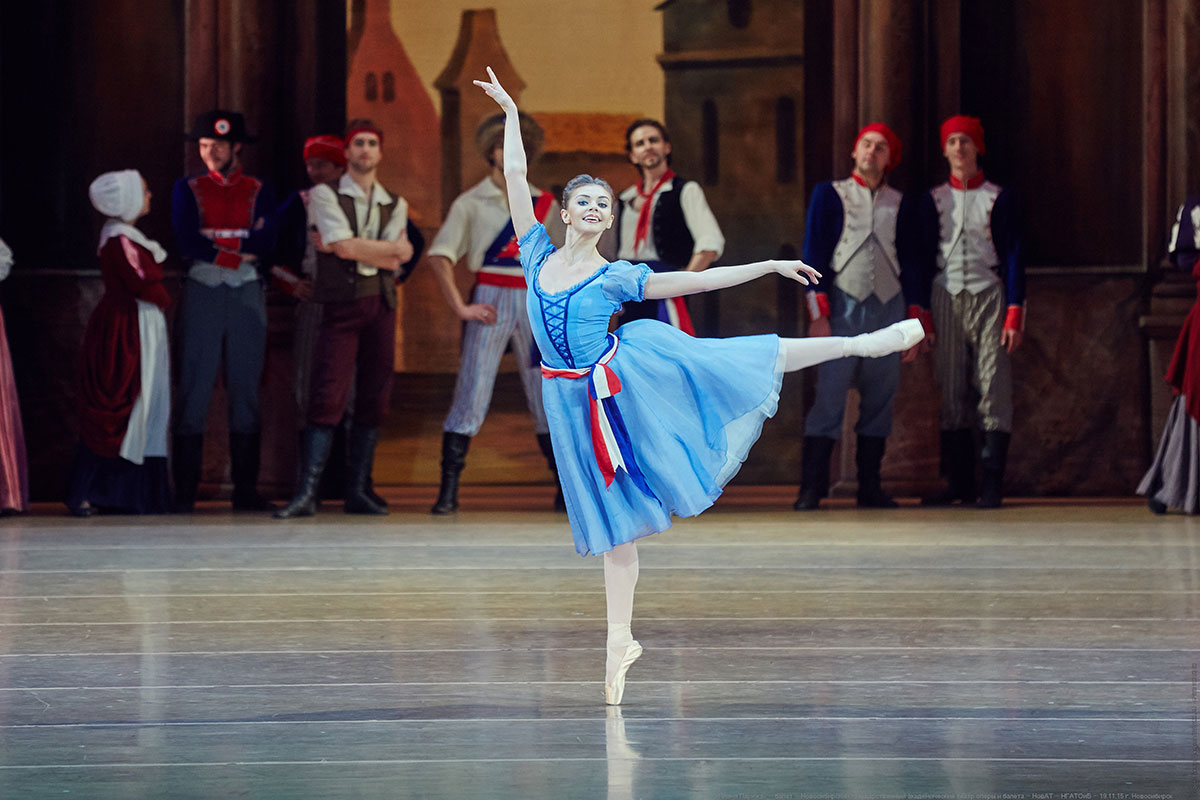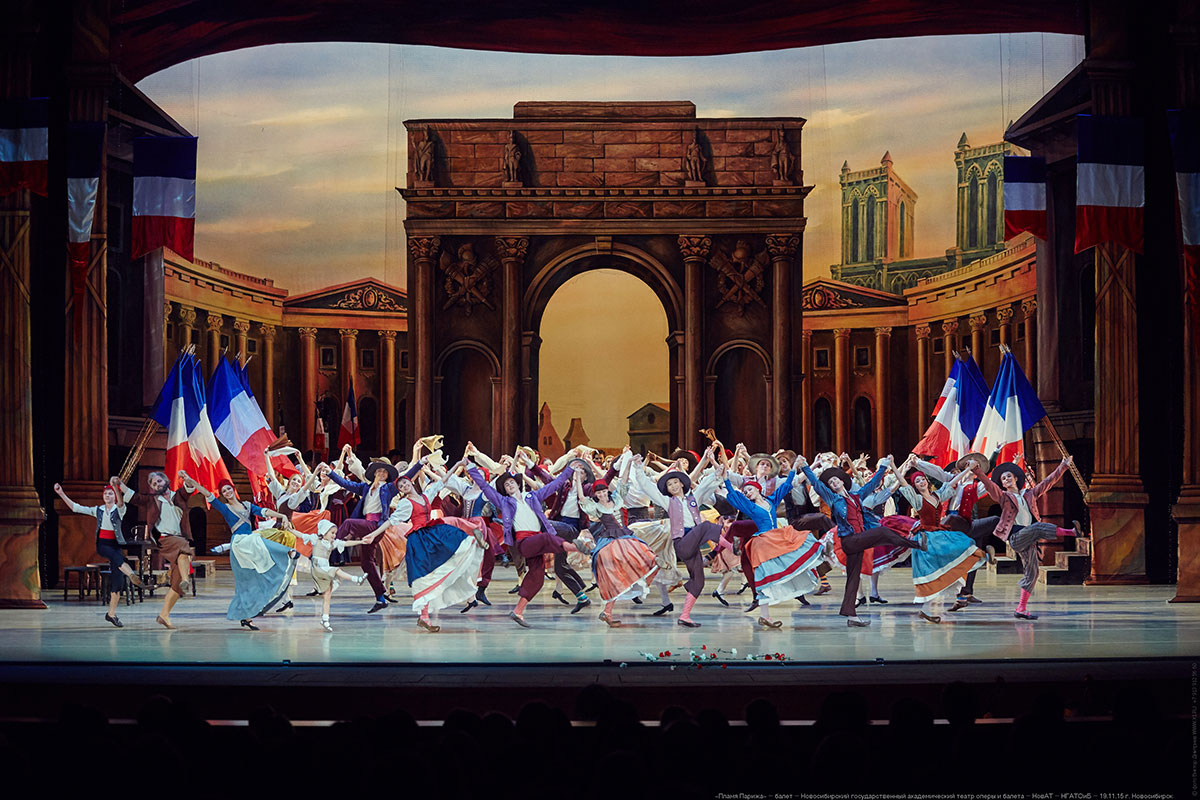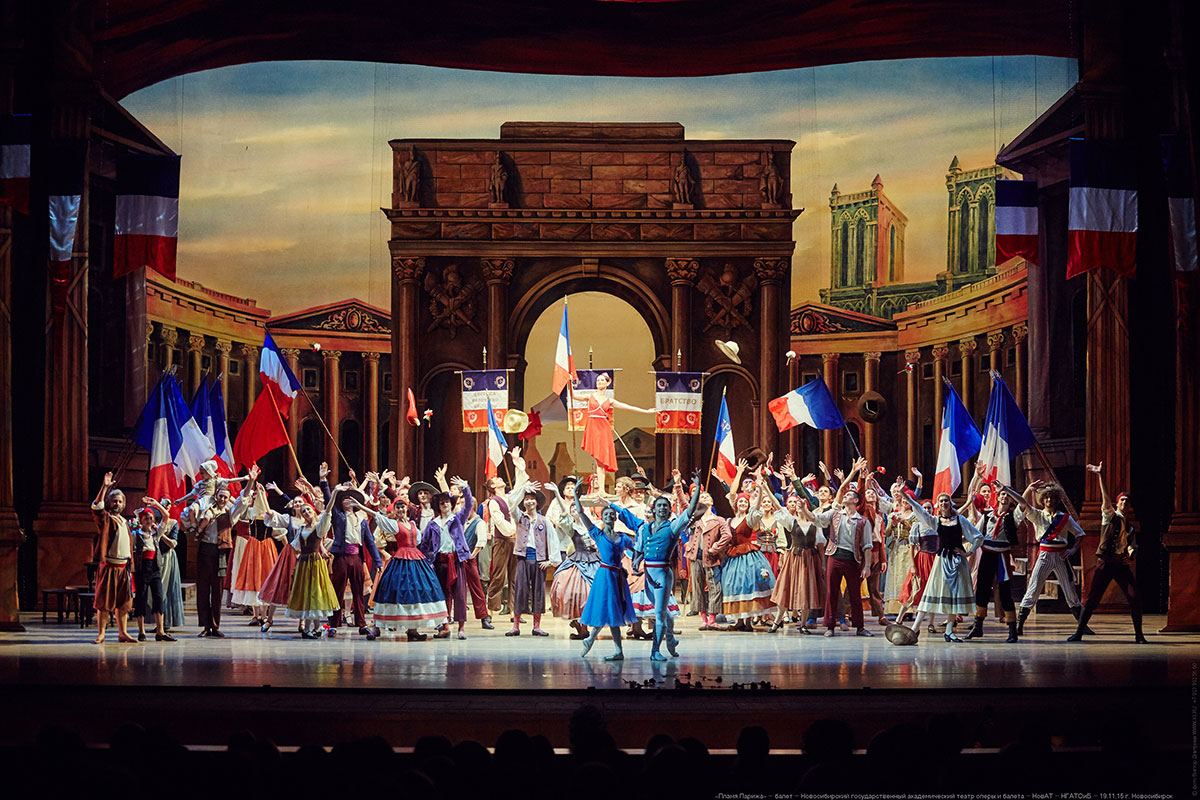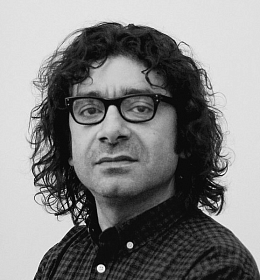hall
Artists
Credits
Libretto by Nikolay Volkov and Vladimir Dmitriev after “Les Rouges du Midi” novel by Felix Gras is revised by Mikhail Messerer
Choreography by Vasily Vaynonen revised by Mikhail Messerer
Musical director and conductor: Karen Durgaryan
Stage and Costume Design: Vladimir Dmitriev
Ballet master — stage choreographer: Mikhail Messerer
Revival of the Stage and Costume Designs: Vyacheslav Okunev
Lighting designer: Alexander Kibitkin
Chief choirmaster: Vyacheslav Podelsky
2 hours 05 minutes
two intervals
Historical mural depicting events of the French Revolution has returned to the Novosibirsk theatre, having scorched the stage and the house with flames of fight for freedom and personal dignity. Choreography by Vasily Vainonen, recognized as the most outstanding achievement of Soviet ballet, is recreated by Mikhail Messerer paying homage to the original and understanding modern times.
Act I
Scene 1
Summer of 1792. A suburb of Marseille. Edge of the woods near the castle of Marquis de Beauregard. Gaspar and his children, 18-year-old Jeanne and 9-year-old Jacques, appear out of the woods with a cart of firewood. Jeanne plays with Jacques. The boy jumps over the faggot bands he laid out on the grass. The sound of a horn heralds the Marquis’s return from hunting. Gaspar and the children are in a hurry to leave after collecting the faggot bands but Marquis de Beauregard and the huntsmen appear from the woods. De Beauregard is furious with the peasants collecting the faggot in his woods. The huntsmen turn the cart upside down and the Marquis commands them to beat up Gaspar. Jeanne is trying to stand up for her father, and the Marquis then makes a stab at her as well, but he hurries to his castle upon hearing the sound of the revolutionary song.
A squad of the Marseille rebels led by Philippe appears with banners, they head for Paris to help the revolutionary people. The rebels help Gaspar and Jeanne to put the cart back on its wheels and get the scattered faggot bands. Jacques enthusiastically waves the revolutionary flag, given to him by one of the Marseillais. At the time the Marquis manages to flee his castle through a secret door. The peasants come and greet the soldiers from Marseille. Philippe encourages them to join the squad. Gaspar and the children join the rebellious. All of them move off to Paris.
Scene 2
A festivity at the King’s palace. Ladies-in-waiting and officers of the royal guard dance the sarabande.
When the dance is over, the master of ceremonies invites the guests to see a performance of the court theatre. Actors Diana Mireille and Antoine Mistral perform an intermezzo, portraying the characters of Cupid’s victims.
King Louis XVI and Queen Marie Antoinette arrive. The officers raise their glasses celebrating the king. Marquis de Beauregard, who has just arrived from Marseille, enters the room. He shows the rebels’ three-coloured banner with the “War on the palaces, peace to huts!” slogan and treads it under his feet, he then kisses the royal standard by the throne. The Marquis reads out the message to the Prussians, written by him, in which Louis XVI should call for Prussia to send troops to France and put an end to the revolution. Louis is asked to sign the document. The King hesitates, but Marie Antoinette persuades him to put his signature. Marquis and the officers, in a burst of enthusiasm for monarchy, vow to fulfill their duty to the King. They draw their weapons and enthusiastically salute the royal couple. The Queen expresses her confidence in the loyalty of the persons present. Louis is moved, he brings a handkerchief to his eyes.
The royal couple and the majority of ladies-in-waiting leave the ballroom. The footmen bring the tables in, more glasses to the monarchy are raised. The admirers of Diana Mireille invite the actors to take part in the celebration. They ask Ms. Mireille to dance; she and Antoine perform an improvised short dance, exuberantly received by the audience. The tipsy Marquis insistently invites Mireille to dance, and she has to agree. His rudeness disgusts her, she would love to leave — but she shouldn’t. Diana tries to stay close to Mistral, who strives to distract the Marquis, but de Beauregard rudely pushes the actor away and several officers take Antoine back to the table. Ladies quietly leave the room. Finally Mireille finds a specious pretext to leave as well, but the Marquis follows her.
Wine affects the guests even more, some of the officers fall asleep right at the tables. Mistral notices the “Appeal to Prussia” left on the table. He starts reading it, first without thinking and then with more and more interest. The Marquis returns and notices the paper in the hands of Antoine: he runs amock, pulls out a gun and shoots the actor. Antoine is fatally injured. The sound of the gunshot and Antoine’s fall wakes some of the officers up, they surround the Marquis and hurry him away.
Having heard the sound of the gunshot too, Mireille pounces into the ballroom. She sees Mistral’s lifeless body and leans over him trying to see, if he’s still alive and then call for help... But he is now dead. Suddenly she notices a paper clutched in his hand and reads it. The approaching sounds of La Marseillaise are heard outside. Mireille understands, why Mistral was killed, and now she knows what she is to do. Having hid the paper she leaves the palace.
Act II
Scene 1
At night. A square in Paris, where crowds of the citizens, armed squads from provinces, including the Basques and men from Auvergne gather together. The Parisians are glad to see the squad from Marseille. A group of the Basques stands out by their readiness to fight. One of them is Teresa, an active participant of the street protests of the sans-culottes. Diana Mireille’s arrival stops the dances. She shows the crowd the appeal of the King to the Prussians, which confirms the betrayal of the aristocracy. People dance and sing La Carmagnole. Arms are distributed. Philippe calls to storm the Tuileries. Under the tricolour banners, singing the revolutionary Ça ira, the crowd moves to the King’s palace.
Scene 2
Crowds of the armed people dash to storm the palace.
Tuileries palace. Marquis de Beauregard brings the Swiss Guard soldiers. At his command, the Swiss take positions assigned by him. The courtiers walk the frightened ladies away. Suddenly the doors fly open, people burst into the chambers of the palace. Philippe bumps into Marquis de Beauregard. After a fierce fight with the Marquis Philippe knocks his sword aside, de Beauregard tries to shoot Philippe, but the crowd attacks him.
The Swiss, the last defenders of the King, are swept away. Teresa the Basque runs in holding the banner in her hands and falls, shot dead by a bullet of an officer. The battle is over. The palace is taken. The Basques, Philippe, and Gaspar lift Teresa’s body over the heads, the people decline the flags.
Act III
People are celebrating the seizure of Tuileries on the square of the former King’s palace. Merry dances give way to performances of Paris theatres. Diana Mireille, surrounded by girls wearing ancient costumes, performs a dance with the tricolor flag that symbolizes the victory of the Revolution. Allegoric dances of Equality and Fraternity are being performed. People shower Jeanne and Philippe with flowers: it’s also their wedding day. La Carmagnole is being sung. People carry Diana Mireille in their arms as a symbol of freedom.
